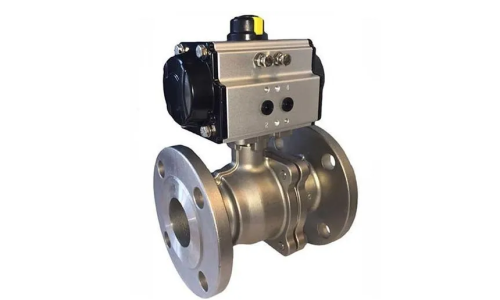Product Details
Actuated ball valves are sometimes fitted with an electric or pneumatic actuator instead of a manual handle operation to turn the valve on or off. They have a direct connection to the valve stem and can turn it a quarter of a turn.
Though actuators and ball valves are different components they are frequently used in conjunction. So, getting them as a package to ensure conformity is more advantageous. When you combine an actuator and a ball valve, you get an automatic ball valve that can be controlled remotely. The actuator and the ball valve are connected by a connection interface. The connection interface consists of a shaft, or stem, that connects the valve ball to the actuator, and a flange that bolts the actuator to the valve. A brand-specific actuator can be installed on a compatible brand-specific valve. Different ball valves and actuators, on the other hand, can be used as long as they comply with the same standard, such as the ISO 5211.
Types of Actuated ball Valve.
There are two main types according to their movement:
- In double-acting actuators, air or liquid is delivered to both sides of the piston, with one side having a greater pressure than the other, resulting in the movement needed to actuate the valve. The pneumatic or hydraulic force of the air or liquid energy is used to open and shut the valve in this configuration.
- Spring-return or single-acting actuated valve only has one side of the piston supplied with air or liquid, and the energy to move the systems is provided by a spring on the opposite side. The pneumatic or hydraulic pressure of the fluids is used to open or close the valve when a spring affects the opposite motion.
Pneumatic Actuated Ball Valve
For the operation of an actuated ball valve, a variety of power supplies are available. Pneumatic, hydraulic, and electric actuators are the types of power sources available. A company should analyze which kind of actuated ball valve will be best for their needs. A pneumatically actuated ball valve is driven by air pressure, while a hydraulically actuated ball valve is propelled by hydraulic fluid pressure. Electric actuated ball valves are controlled by electricity.
- Pneumatically Actuated Ball valve: The operating power in pneumatic actuators is generated by compressed air. These actuators are quick to react but are not suitable for high-pressure environments due to the compressibility of the gas. Pneumatic actuators are available in spring-return and double-acting configurations.

